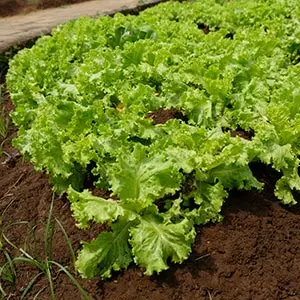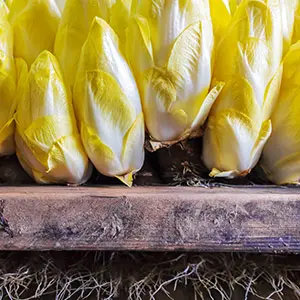Endive: Offers a Dose of Nutrient With Every Enticing Crunch
Can be offered raw to your pet for an extra crunch, this leafy veggie contains a wealth of bioactive compounds that may support your pet's health in various ways. Dive deep into its health benefits here!

STORY AT-A-GLANCE
- Endive is a plant belonging to the chicory family of vegetables, known for its slightly bitter flavor
- Research has shown that the bioactive compounds in endive, such as chicoric acid and inulin, may support pet health
- Chicory is a rich source of inulin, which acts as a nutritious food source for your pet’s gut microbiome
Common endive (Cichorium endivia) is a leafy green plant known for its slightly bitter taste. It comes in different varieties but is generally characterized by its narrow green leaves with white stems. In terms of its culinary flexibility, endive can be enjoyed raw or mixed into salads and other recipes.1
If you happen to have endive at home, could you feed it to your pet as well? The answer is yes. Research has shown that endive contains beneficial nutrients that may support pet health. Read on to learn how you can properly serve endive to your pet.
Did You Know?

The endive we know today is only a recent “creation.” In 1830, Jan Lammers left chicory root in his cellar before heading off to fight in a war. When he returned, he noticed that white leaves had sprouted, hence the creation of endive.2
These Bioactive Compounds Are Found in Endive
The chicory (Cichorium) family of vegetables contains a wealth of bioactive compounds that may support your pet’s health, such as inulin, chicoric acid and sesquiterpene lactones.3
Inulin is classified as a prebiotic, which acts as a nutritious food source for your pet’s gut microbiome.4 And as you may know, a healthy gut is important for overall pet health. Research has found that dogs who increased prebiotic intake had better gut health. Specifically, probiotic population increased while pathogenic bacteria population went down, according to one study.5
Meanwhile, chicoric acid helps the plant protect itself from environmental dangers such as viruses, bacteria, fungi and nematodes.6 According to a study published in the Journal of Medicinal Food, this compound possesses antiviral, antioxidant, anti-inflammation and neuroprotective benefits.7 Furthermore, animal tests have shown that chicoric acid may help regulate behavioral and biochemical alterations induced by chronic stress.8
In another study, the bioactive compounds of the cichorium plant family were investigated for its antiparasitic activity, particularly sesquiterpene lactones. Researchers discovered that the sesquiterpene lactones in the cichorium plant have antimalarial properties, as well as antiprotozoal activity in livestock.9
Other Nutrients in Endive
Endive is ranked as a good source of vitamin K,10 a crucial nutrient that may help manage proper clotting of the blood, according to the College of Veterinary Medicine of Cornell University.11 Another compound found in endive is beta carotene, a vitamin A precursor.12 According to research published in The Scientific World Journal, animals need vitamin A for proper immune function, as well as normal cellular differentiation and development, and eye health.13
Cichorium leaves also contain ample amounts of magnesium, which is an essential mineral for proper daily functioning of the body. Dogs require magnesium as it functions similarly to how humans use the mineral. Magnesium is involved in muscle contraction and relaxation, neuronal signal transduction and bone mineralization.14
Fun Fact About Endive

In 1872, endive was so popular in Paris, France that it was dubbed “white gold.”15
How to Serve Endive to Your Pet
The most common way to serve endive to your pet is raw. Make sure to chop it into bite-sized pieces so your pet can swallow them comfortably. Aside from using endive as a food topper, you can also use it as part of a homemade meal.
Sustainability of Growing Endive
If you have a green thumb, you’ll be happy to know that growing endive poses little danger to the environment. It’s estimated that it only takes 322 liters of water to produce a kilogram of harvest. The carbon footprint is similar as well — the entire process produces 1.6 kilograms of CO2e (carbon dioxide equivalent) for every kilogram harvested.16 You can minimize environmental impact further if you forgo the use of industrial pesticides and stick to organic, sustainable agricultural practices.
When buying endive, you can opt for conventionally grown varieties. As of 2023, endive is not mentioned in the Environmental Working Group’s list of produce with pesticide residues. This means that current endive production is still not rife with pesticide abuse.17
Top Endive Producers in the World

The top three producers of endive are all located in Europe. The leading country is France, followed by Belgium and the Netherlands.18

Endive Is a Crunchy Topper, but Don’t Make It the Only One
Misinformation about many healthy fruits, vegetables, nuts and seeds abounds on the internet. This is because websites have labeled all risks (such as the risk of overconsumption causing gastrointestinal issues, or choking on too large of pieces or pits) as "toxicities," which isn't true but has managed to confuse millions of pet lovers, nonetheless.
Endive used as a treat (or food topper) is safe for your pet, as long as you give it in minimal to moderate amounts as a part of a nutritionally complete homemade diet.
Sources and References
- 1 Love My Salad, Endive
- 2 Wisconsin Department of Public Instruction, Endive
- 3 Molecules. 2021 Mar; 26(6): 1814, Abstract
- 4 Very Well Health, "What Is Inulin?"
- 5 J Nutr. 1999 Jul;129(7 Suppl):1454S-6S, Abstract
- 6 Front Chem. 2013; 1: 40, Introduction
- 7 J Med Food. 2019 Jul;22(7):645-652, Abstract
- 8 Pharmacol Biochem Behav. 2011 Sep;99(3):342-8, Abstract
- 9 Parasites & Vectors volume 11, Article number: 475 (2018), Abstract
- 10,12 MedicalNewsToday, "Best 40 Foods for Vitamin K"
- 11 Cornell University, "Vitamin K Deficiency"
- 13 ScientificWorldJournal. 2016; 2016: 7393620, Forms and Functions of Vitamin A
- 14 Tierarztl Prax Ausg K Kleintiere Heimtiere. 2018 Feb;46(1):21-32, Abstract
- 15 La Fuji Mama, "Endive: A Vegetable With a Unique History"
- 16 HeaLabel, "Endive Benefits and Side Effects"
- 17 Environmental Working Group, "EWG's 2023 Shopper's Guide to Pesticides in Produce™"
- 18 Liberty Prim, "Endive-Vegetables"








